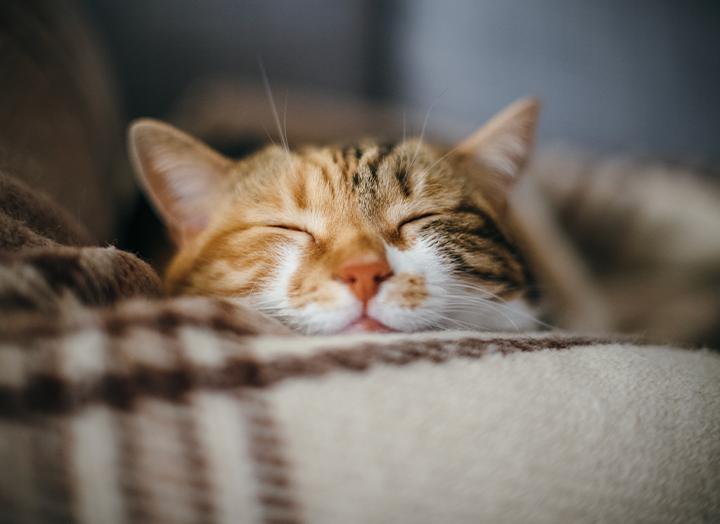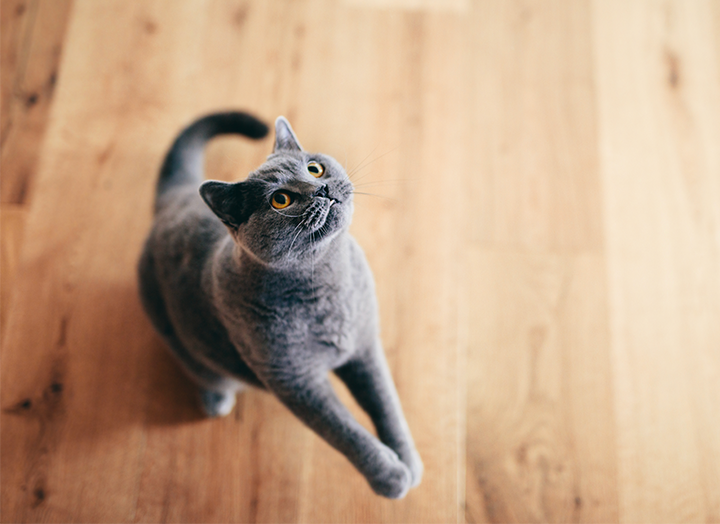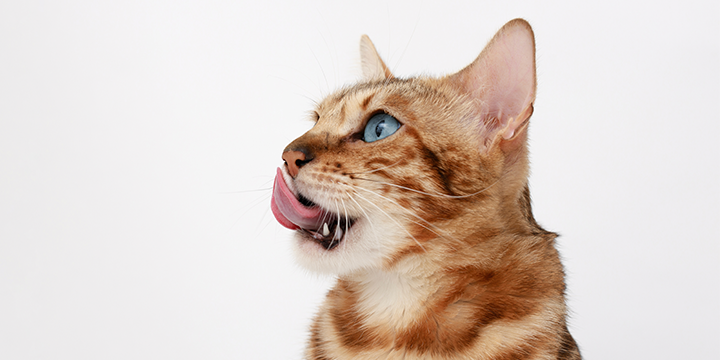[vc_row][vc_column][vc_column_text css=””]
You’re probably familiar with diabetes, but did you know it affects more than just humans? It’s an unfortunate truth, but quite commonly cats experience it, too. In this article, we will cover the most common signs of cat diabetes, what causes cat diabetes, and the best cat diabetes treatment options available.
[/vc_column_text][vc_column_text css=””]
The recommendations in this blog are for information purposes only and should not be taken as veterinary advice. We always recommend consulting with your holistic veterinarian prior to changing your cats medication or diet
[/vc_column_text][/vc_column][/vc_row][vc_row][vc_column][vc_row_inner content_placement=”middle”][vc_column_inner width=”1/2″][vc_column_text css=””]
What is cat diabetes?
Cat diabetes, or feline diabetes, occurs when there is an excess of glucose in the blood and the body can no longer produce or use insulin effectively. This can lead to serious health problems and even death if left untreated. Luckily, if you properly recognize the signs of diabetes in your cat, you can get them the proper treatment they need to manage the condition.
According to Cornell Feline Health Center, pets who experience feline diabetes most commonly suffer from the Type II form of the disease. It is estimated that up to 1% will be diagnosed with the disease over the course of their life, usually after they’ve turned six years old.
Similarly to humans, feline diabetes is known to be hereditary, and as such, is most commonly found in certain breeds like orange, Burmese, Abyssinian, and Norwegian Forest cats. It is also known that neutered male cats are also more prone to the disease than their female counterparts. [/vc_column_text][/vc_column_inner][/vc_row_inner][vc_column_text css=””]
Signs of cat diabetes
There are several cat diabetes symptoms you can look out for in your pet.
[/vc_column_text][vc_row_inner][vc_column_inner width=”1/2″][vc_column_text css=””]
Increased thirst
One of the earliest cat diabetes symptoms is increased thirst. If your cat is drinking more water than usual, it could be a sign that its blood sugar levels are too high.
Increased urination
As a result of increased thirst, cats with diabetes will also have an increased frequency of urination. You may notice your cat using the litter box more often than usual or leaving puddles of urine around the house.
Appetite changes
Some cats who suffer from this disease may experience a decreased appetite, while others may have a voracious appetite. Either way, changes in your cat’s eating habits can be a sign of diabetes.
Weight loss
Despite having an increased appetite, feline diabetes can cause some cats to experience weight loss. This is because the body is unable to use the glucose in the blood for energy, so it begins to break down fat and muscle for fuel instead.[/vc_column_text][/vc_column_inner][vc_column_inner width=”1/2″][/vc_column_inner][/vc_row_inner][vc_row_inner content_placement=”middle”][vc_column_inner width=”1/2″][vc_column_text css=””]
Weakness and lethargy
As the body begins to break down fat and muscle, cats with diabetes may experience weakness and lethargy. They may also seem less interested in playing and may sleep more than usual.
Poor coat condition
Feline diabetes can also affect your cat’s skin and fur. You may notice that their coat is dull and lifeless, or that they are losing fur in patches.[/vc_column_text][/vc_column_inner][/vc_row_inner][vc_column_text css=””]
What causes cat diabetes?
If you’re wondering what causes cat diabetes, we’ve listed a few of the culprits below.
[/vc_column_text][vc_row_inner content_placement=”middle”][vc_column_inner width=”1/2″][vc_column_text css=””]
Genetics
As we had previously mentioned, some breeds of cats, such as the Burmese and Siamese, are more prone to developing feline diabetes. This suggests that there may be a genetic component to the disease.
Obesity
Obesity is one of the most common causes of this disease. When a cat is overweight, their body will have a harder time producing and using insulin, which can lead to high blood sugar levels. Obesity can even lead to further problems involving cat arthritis symptoms.[/vc_column_text][/vc_column_inner][vc_column_inner width=”1/2″][vc_column_text css=””]

Age
Older cats are more likely to develop feline diabetes, as their bodies become less efficient at producing and using insulin as they age.
Other medical conditions
Certain medical conditions, such as pancreatitis or hyperthyroidism, can increase a cat’s risk of developing This disease.[/vc_column_text][/vc_column_inner][/vc_row_inner][vc_row_inner content_placement=”middle”][vc_column_inner width=”1/2″][vc_column_text css=””]
What is offered as cat diabetes treatment?
While there is no specific cure for feline diabetes, there are a few ways to manage it.
Insulin therapy
Insulin therapy is the number one treatment for cats suffering from this condition. Your veterinarian will prescribe the right type and dose of insulin for your cat and will teach you how to give injections at home.
Regular check-ups
Regular check-ups with your holistic veterinarian are essential to monitoring your cat’s condition and ensuring that its treatment plan is working effectively. Your veterinarian may also perform blood tests to monitor your cat’s glucose levels and make any necessary adjustments to their treatment plan.
Weight management
Maintaining a healthy weight is important for all cats, but it is especially crucial for those with this condition. If your cat is overweight, your holistic veterinarian may recommend a weight loss program to help regulate your cat’s glucose levels and improve their overall health.
Diet
Diet is an important part of managing feline diabetes. With that said, we recommend feeding your cat a nutritious, low-carbohydrate diet. These diets may help regulate their blood sugar levels and improve their overall health. For the aforementioned reasons, we recommend a raw diet as an option for diabetes cat food. When it comes to switching a cats diet, especially one who has medical concerns, we always recommended speaking with your holistic veterinarian first. [/vc_column_text][/vc_column_inner][vc_column_inner width=”1/2″][vc_column_text css=””]

Why does a raw diet make good diabetes cat food?
A Bold by Nature raw cat food diet can make vast improvements to your pet’s health! Bold by Nature Cat recipes are carbohydrate-free, which is key to improved blood sugar levels, and rich in protein to ensure cats are provided with all other nutrients. Our diets are also free of unnecessary fillers, meaning they help to promote excellent body condition, prevent obesity, and are great for pets suffering from cat constipation symptoms. As single-protein diets, they’re also ideal for pets with cat food allergies, as pinpointing specific allergens becomes much easier. In addition to being a smart choice for pets with this condition, raw food also makes a great cat renal diet and supports those with kidney problems.
Since cats with diabetes are prone to using the bathroom more frequently, a raw food diet’s rich moisture content can help them stay hydrated, aid digestion, and nutrient absorption. Cats with diabetes can live a long, happy life with careful monitoring and veterinary support. Careful monitoring and attentive care of our feline friends, allow us to notice changes in their health and behaviour early, which can help support a better prognosis.
Whatever diet you choose, make sure you speak with your holistic veterinarian first.[/vc_column_text][/vc_column_inner][/vc_row_inner][vc_column_text css=””]
Where can I get Bold by Nature products?
Want to get your cat started on a raw journey? You can conveniently purchase raw food online or at a local retailer that carries Bold by Nature products. If you’re unsure of which stores carry our products, you can use our location finder to explore retailers near you!
[/vc_column_text][/vc_column][/vc_row]












